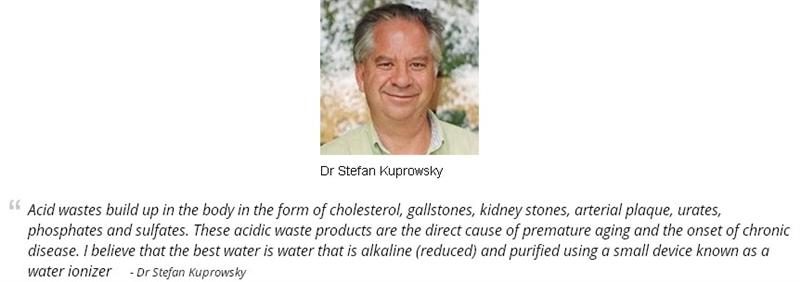Living Water and Hunza Water
Alkaline ionized water is called ‘Living Water’. It is similar in atomic structure to the waters that the people of Hunza drink directly from glacial streams in the high Himalayas. It is fresh, invigorating, life enhancing, free radical scavenging and delicious
The Hunza have the longest life span in the world and this has been traced as related to the water that they drink and their natural diet. Hunza water is an example of perfect natural water. Hunza has people who routinely live to 120-140 years, in good health with virtually no cancer, degenerative disease, dental caries or bone decay. Hunza people remain robust and strong and are also able to bear children even in old age. Research has proven conclusively that the major common denominator of the healthy long-living people is their local water.
Dr. Henri Coanda, the Romanian father of fluid dynamics is believed to be the first scientist to study the physical properties of Hunza water to determine what it was in this water that caused such beneficial effects for the body. His studies suggested that Hunza glacier water appeared to have a different viscosity and surface tension then normal city water.
Dr. Patrick Flanagan and others picked up on this research. They found Hunza water had a high alkaline pH (high mineral content) and a high amount of active hydrogen (hydrogen with an extra electron), with a high negative Redox Potential (ORP).
Similar natural water properties and longevity are found in other remote unpolluted places such as the Shin-Chan areas of China, the Caucasus in Azerbaijan, and in the Andes Mountains
History of The Water Ionizer: re-creating Hunza Water
In the late 40’s and early 50’s there was a lot of interest amongst researchers on the health of the Hunza mountainous people living in the foothills of the Himalayas. They showed little disease, no tooth decay, very long life spans and robust health even in old age. Researchers wanted to establish what could account for it. They concluded that it could be due to the Hunza diet, in particular the glacier water that they drank, as well as the clean air and natural diet.
The properties of Hunza water were studied in depth. In efforts to recreate this ‘magical’ Hunza water, Japanese scientists investigated Russian electrolysis technology. They found that electricity could be used to re-structure the water, giving it properties similar to Hunza water.
This was the birth of Japanese functional water technology, first developed in Japan in the early 1950’s. The used electricity and magnets to improve the qualities of water. They conducted experiments, first on plants and animals, and found significant differences as compared to tap water in terms of growth and general health. Animals and plants remember are not subject to the placebo effect.
Full scale experiments were started by several agricultural universities in 1954.
Experiments on the human body followed, conducted by Japanese doctors.
Satisfied with the experimental results, large ionizers were built in coordination with the Japanese Government. The first ionizers built were large units used in Japanese Hospitals in the early 60’s.
Following efforts by Japanese medical doctors and agriculture doctors, the water ionizer was approved for medical therapeutics by the Japanese Ministry of Health and Rehabilitation in January 1966. Later they were also approved as medical devices by the government of South Korea.
Some 30 million people in Japan have used a water ionizer over the last 40 years.

































